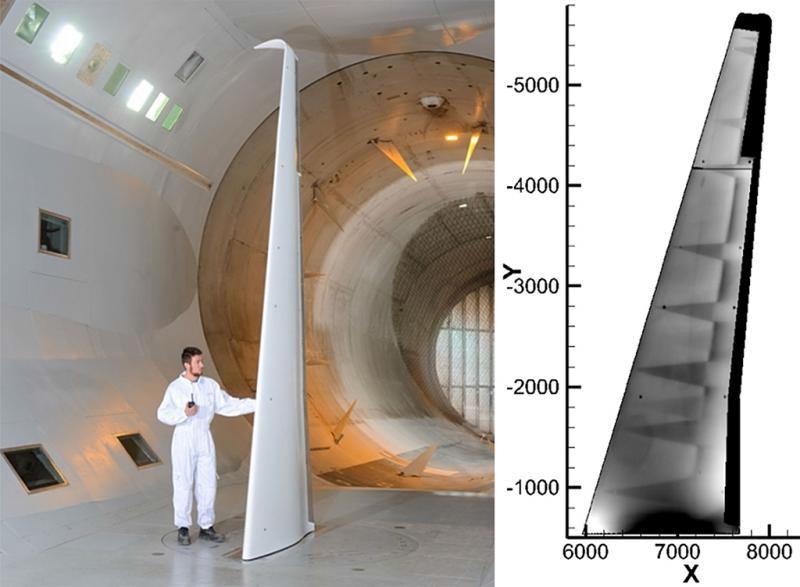A low-drag natural laminar flow wing for a future regional aircraft has been tested by ATR partner Leonardo and French research agency ONERA. The large-scale model was evaluated in ONERA’s S1MA transonic wind tunnel.
The goal of the tests, conducted under Europe’s Clean Sky research program, was to determine whether the extent of laminar flow achieved was sufficient to produce a substantial reduction in drag.

The 5.2-m (17-ft.) half-span wing was tested at Mach 0,74.
Its Reynolds number, a scaling metric, was close to that of a real aircraft in cruise flight, which is particularly critical when validating laminar flow. Infrared cameras detected variations in flow temperature, enabling high-quality visualization of laminar and turbulent flow in real time.
Smooth laminar flow was achieved in cruise over almost 70% of the upper wing surface, and 30% of the lower surface, agreeing with computational predictions, says Clean Sky. The test also investigated wing load control, using the trailing-edge control surfaces to optimize spanwise load distribution to improve off-design aerodynamic efficiency and reduce wing bending loads.
The complex aeroelastic wing model was manufactured under the €4.2 million ($4.6 million) European Etriolla project led by German surface-finishing company IBK. Tight tolerances were imposed to control steps, gaps and surface waviness that can disrupt laminarity, while meeting elasticity requirements to accurately model bending of the full-scale wing.
Graham Warwick | Aviation Week & Space Technology Feb 6, 2017




